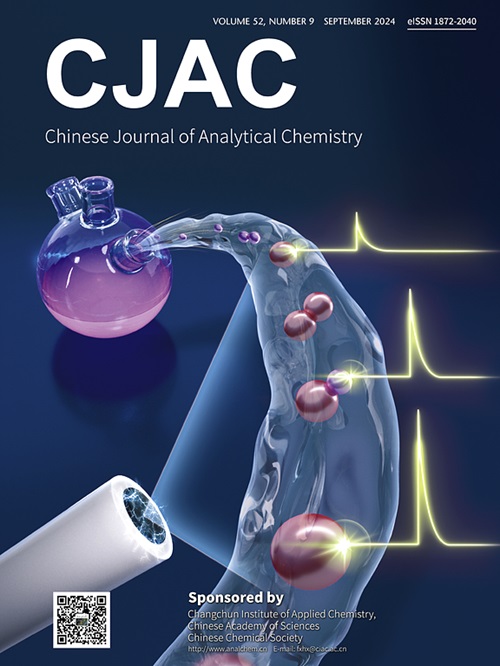Advances in rapid detection methods for African swine fever virus
IF 1.2
4区 化学
Q4 CHEMISTRY, ANALYTICAL
引用次数: 0
Abstract
In 2018, China encountered its maiden case of African swine fever virus (ASFV), and subsequently, the epidemic swiftly disseminated across over 30 provinces nationwide. Due to the incomplete understanding of its pathogenic mechanisms, lack of effective treatments, vaccines, and rapid detection technology for ASFV has become a crucial tool for the aquaculture industry to identify and prevent outbreaks timely. As biotechnology and medical sciences advance, the detection methods for ASFV are also continually developing and improving. The advent of portable instruments and other mobile testing equipment has enabled ASFV detection beyond traditional laboratory settings, enhancing the efficiency and timeliness of testing. This paper reviews the epidemiology and virus structure of ASFV, discusses traditional detection methods both domestically and internationally, and presents the latest advancements in new rapid detection techniques. Furthermore, the application prospects of these rapid virus detection methods are explored to provide a reference for the early detection and diagnosis of ASFV.

非洲猪瘟病毒快速检测方法研究进展
2018年,中国首次发现非洲猪瘟病例,疫情迅速蔓延至全国30多个省份。由于对其致病机制的认识不完全,缺乏有效的治疗方法、疫苗和快速检测技术,ASFV已成为水产养殖业及时发现和预防疫情的重要工具。随着生物技术和医学的进步,非洲猪瘟病毒的检测方法也在不断发展和完善。便携式仪器和其他移动检测设备的出现使非洲猪瘟检测超越了传统的实验室环境,提高了检测的效率和及时性。本文综述了非洲猪瘟的流行病学和病毒结构,讨论了国内外传统的检测方法,并介绍了新的快速检测技术的最新进展。并对这些快速病毒检测方法的应用前景进行了探讨,为ASFV的早期发现和诊断提供参考。
本文章由计算机程序翻译,如有差异,请以英文原文为准。
求助全文
约1分钟内获得全文
求助全文
来源期刊
CiteScore
3.60
自引率
25.00%
发文量
17223
审稿时长
35 days
期刊介绍:
Chinese Journal of Analytical Chemistry(CJAC) is an academic journal of analytical chemistry established in 1972 and sponsored by the Chinese Chemical Society and Changchun Institute of Applied Chemistry, Chinese Academy of Sciences. Its objectives are to report the original scientific research achievements and review the recent development of analytical chemistry in all areas. The journal sets up 5 columns including Research Papers, Research Notes, Experimental Technique and Instrument, Review and Progress and Summary Accounts. The journal published monthly in Chinese language. A detailed abstract, keywords and the titles of figures and tables are provided in English, except column of Summary Accounts. Prof. Wang Erkang, an outstanding analytical chemist, academician of Chinese Academy of Sciences & Third World Academy of Sciences, holds the post of the Editor-in-chief.

 求助内容:
求助内容: 应助结果提醒方式:
应助结果提醒方式:


